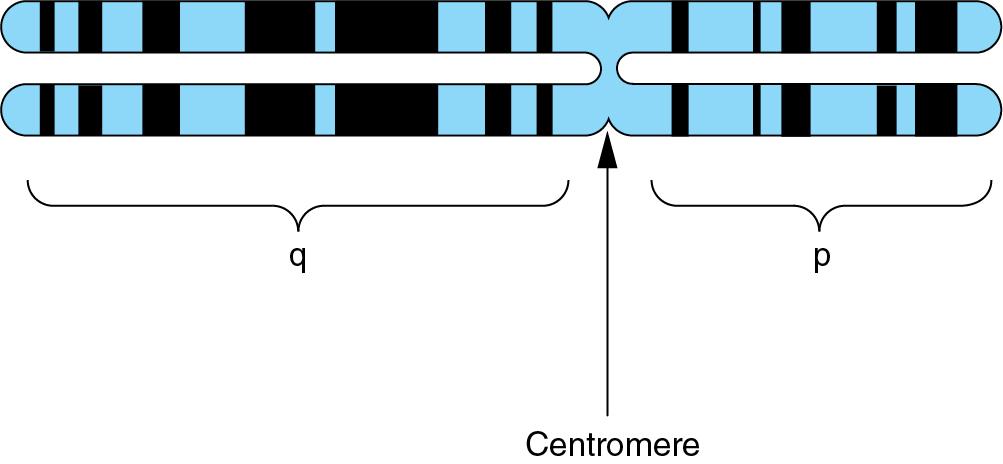Physical Address
304 North Cardinal St.
Dorchester Center, MA 02124
Recent and rapid advances in genetics have had an impact on our understanding of skin diseases. The Human Genome Project has now mapped all human genes, of which there are about 35 000. Whilst the original Mendelian concept of single gene (monogenic) disorders applies to many skin diseases, which can therefore show classical patterns of inheritance including autosomal dominant (AD), and autosomal recessive (AR). These conditions can show alterations in keratinization ( Table 6.1A ), blistering ( Table 6.1B ), DNA repair ( Table 6.1C ), pigmentation ( Table 6.1D ), appendigeal/vasculature changes ( Table 6.1E ), connective tissues and cancer risk ( Table 6.1F ). Common conditions such as atopy are more complicated as a result of a complex interaction between multiple susceptibility genes and the environment. An average pregnancy carries a 1% risk of a single gene disease and a 0.5% risk of a chromosome disorder, but genetically influenced traits, e.g. atopy, are much more common.
| Gene | Protein | Gene MIM No. | Disease | Inheritance |
|---|---|---|---|---|
| ABCA12 | ATP-binding cassette transporter 12 | 607800 | Harlequin ichthyosis, autosomal recessive 4B | Autosomal recessive (AR) |
| ATP2A2 | Sarcoplasmic/endoplasmic reticulum calcium ATPase 2 | 108740 | Darier disease | Autosomal dominant (AD) |
| ATP2C1 | Calcium-transporting ATPase type 2C member 1 | 604384 | Hailey–Hailey disease | AD |
| ERC2/3 | ELKS/RAB6-interacting/CAST family member 2/3 | 126340, 133510 | Trichothiodystrophy | AR |
| FLG | Filaggrin | 135940 | Ichthyosis vulgaris | AD |
| RHBDF2 | Rhomboid family member 2 | 614404 | Tylosis with oesophageal cancer | AD |
| SPINK5 | Serine protease inhibitor Kazal-type 5 | 6050101 | Netherton syndrome | AR |
| Gene | Protein | Gene MIM No. | Disease | Inheritance |
|---|---|---|---|---|
| COL17A1 | Collagen 17 | 113811 | Epidermolysis bullosa, junctional, non-Herlitz type | AR |
| COL7A1 | Collagen 7 | 120120 | Epidermolysis bullosa dystrophica, autosomal recessive | AR |
| COL7A1 | Collagen 7 | 120120 | Transient bullous epidermolysis of the newborn | AD/AR |
| KRT14 | Keratin 14 | 148066 | Epidermolysis bulosa simplex, Dowling–Meara type | AD |
| Gene | Protein | Gene MIM No. | Disease | Inheritance |
|---|---|---|---|---|
| XPA | Xeroderma pigmentosum, complementation group A | 613208 | Xeroderma pigmentosum, group A | AR |
| ERCC3 | Excision repair cross-complementation group 3 | 133510 | Xeroderma pigmentosum, group B | AR |
| RECQL4 | RecQ protein-like 4 | 603780 | Rothmund–Thomson syndrome | AR |
| Gene | Protein | Gene MIM No. | Disease | Inheritance |
|---|---|---|---|---|
| KIT | c-kit | 164920 | Piebaldism | AR |
| NF1 | Neurofibromin 1 | 613113 | Neurofibromatosis, type 1 | AD |
| NF2 | Neurofibromin 2 | 607379 | Neurofibromatosis, type 2 | AD |
| PTPN11 | Tyrosine-protein phosphatase non-receptor type 11 | 176876 | Leopard syndrome | AD |
| SPRED1 | Sprouty-related, EVH1 domain containing 1 | 609291 | Legius syndrome | AD |
| TYR | Tyrosinase | 606933 | Albinism, oculocutaneous, type 1 (A/B) | AR |
| Gene | Protein | Gene MIM No. | Disease | Inheritance |
|---|---|---|---|---|
| EDAR | Ectodysplasin A receptor | 604095 | Ectodermal dysplasia, hypohidrotic | AD |
| EDARADDEDAR-associated death domain | 606603 | Ectodermal dysplasia, hypohidrotic | AD | |
| GNAQ | Guanine nucleotide-binding protein G(q) | 600998 | Sturge–Weber syndrome | Mosaic |
| KRT81 | Keratin 81 | 602153 | Monilethrix | AD |
| KRT83 | Keratin 83 | 602765 | Monilethrix | AD |
| RASA1 | RAS p21 protein activator 1 | 139150 | Parkes–Weber syndrome | AD |
| Gene | Protein | Gene MIM No. | Disease | Inheritance |
|---|---|---|---|---|
| ABCC6 | ATP-binding cassette, subfamily C (CFTR/MRP), member 6 | 603234 | Pseudoxanthoma elasticum | AR |
| COL1A1 | Collagen 1, alpha 1 | 120150 | Ehlers–Danlos syndrome, type I/VIIA | AD |
| COL5A1 | Collagen 5, alpha 2 | 120215 | Ehlers–Danlos syndrome, type I/II | AD |
| ELN | Elastin | 130160 | Cutis laxa | AD |
| FBN1 | Fibrillin 1 | 134797 | Marfan syndrome | AD |
| AKT1 | Protein kinase B alpha | 164730 | Cowden syndrome | AD |
| APC | Adenomatous polyposis coli | 611731 | Gardner syndrome | AD |
| FLCN | Folliculin | 607273 | Birt–Hogg–Dube syndrome | AD |
| PTCH1 | Patched 1 | 601309 | Gorlin syndrome | AD |
| TSC1 | Tuberous sclerosis 1 | 605284 | Tuberous sclerosis complex | AD |
| TSC2 | Tuberous sclerosis 2 | 191092 | Tuberous sclerosis complex | AD |
The human genome comprises 23 pairs of chromosomes that are numbered by size ( Fig. 6.1 ). Chromosomes are packets of genes with support proteins in a large complex. The karyotype is an individual’s number of chromosomes plus their sex chromosome constitution, i.e. 46XX for females and 46XY for males. The phenotype is the expression at a biological level of the genotype, e.g. blue eyes or atopy.

Become a Clinical Tree membership for Full access and enjoy Unlimited articles
If you are a member. Log in here